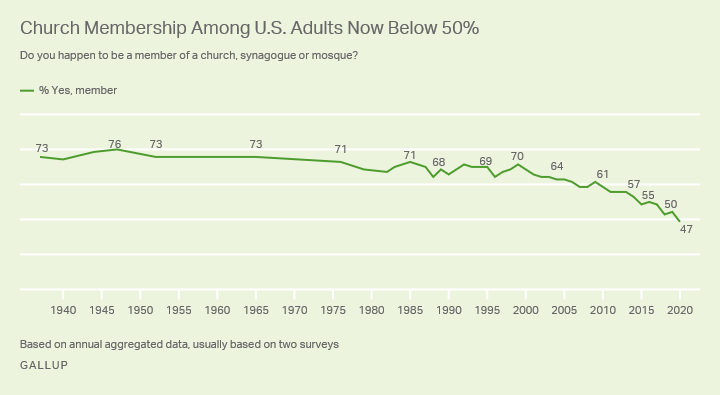We all want to grow our churches. The reason we lead a church in the first place is because we believe we have something our community needs. But expanding your congregation isn’t easy. In this podcast, we want to go over church growth tactics to help you grow your church.
Growing a church requires more than just a welcoming atmosphere; it involves intentional strategies that connect with people on a deeper level. Effective church growth strategies are designed to attract new members, engage the existing congregation, and create a community that fosters spiritual development.
These strategies can include outreach programs, improving worship services, and leveraging social media to reach a broader audience. Churches that focus on personal connections, relevant teachings, and active participation often see the most growth. It’s also important to understand the needs of the community and address them through various ministries. By implementing these strategies, churches can create a thriving environment where people feel valued, connected, and inspired to grow in their faith.
Church growth is not just about numbers; it’s about nurturing a healthy, vibrant community that reflects the love and teachings of Jesus Christ. In this podcast, we’ll cover everything you need to know about growing your church, as well as 9 church growth strategies to help you get there.
Let’s dive in.
Estimated reading time: 10 minutes
Table of contents
Growing Your Church

Before we jump into our 9 church growth strategies, let’s go over everything you need to know about church growth. We’ll cover why church growth is important, what it means to members and leaders, and what it even looks like.
Why Church Growth is Important
Church growth is vital because it directly impacts the spiritual health and vitality of the church community. When more people join the church, it means that more individuals are being introduced to the teachings of Jesus Christ, which is the core mission of any church. Growth allows the local church to have a greater influence in the community, spreading the message of hope and love.
It also ensures that the church can sustain its ministries and programs, providing for the needs of both its members and the wider community. By focusing on church growth, church leaders are helping to fulfill the church’s mission of reaching out to as many people as possible, encouraging their spiritual growth and fostering a stronger community of believers.
Why Church Growth Matters to Church Members and Leaders
For church members, growth means a vibrant and active community. A growing church often has a variety of programs and activities that cater to different age groups and interests, making it easier for members to get involved and connect with others. This sense of belonging is crucial for spiritual growth, as it encourages members to participate in worship, Bible studies, and service opportunities.
Church leaders also benefit from a growing church, as it provides them with the resources and support needed to carry out the church’s mission effectively. More members can lead to more volunteers, more financial contributions, and a wider pool of talent to draw from when organizing events or ministries. This, in turn, helps the church to expand its reach and impact in the community.
What Does Church Growth Look Like?
Church growth can take many forms, but it often involves an increase in church members, a vibrant and active church community, and a deepening of spiritual growth among individuals. It’s not just about numbers; it’s about the quality of engagement within the church.
A growing church may see more people attending services, participating in Bible studies, and volunteering for various ministries. There’s a sense of energy and purpose as the church’s mission is lived out through outreach programs, community events, and meaningful worship experiences. The church building may be busier with activities that serve both the congregation and the wider community.
Overall, church growth is reflected in the strong connections between members, the leadership’s ability to guide and support the community, and the church’s expanding influence in sharing the message of Christ with others.
Top 9 Church Growth Tactics

Many churches are growing right now, but many churches are also shrinking. According to Gallup News, adult membership in churches in the U.S. is now below 50%, seemingly declining every year.

You may be a church that has been slowly growing, but more likely you are a church that has either been decreasing in size or has stayed stagnant. Whatever the case, these 9 tactics for growing a church are for you and your team.
Keep in mind that these tactics are not cheap tricks to get some more numbers. They are real changes you can make to really increase your church’s growth. Use discernment with each one, and only utilize the ones you feel that your church should start doing. This list is not hard-and-fast either, some of these may work for you and some may not. Use what works!
1. Community Outreach Programs
Community outreach programs are an essential way for a church to connect with its local community. These programs often include church events like food drives, clothing donations, or free health clinics that meet the needs of those around them. By organizing these church activities, the church shows its commitment to serving others and sharing the love of Christ in practical ways.
Community outreach helps to build relationships, attract new members, and demonstrate that the church is an active, caring part of the neighborhood. It’s a powerful way to extend the church’s mission beyond its walls.
2. Small Groups
Small groups are an important part of building a strong church family. These groups bring people together in a more intimate setting to study the Bible, pray, and support one another. Meeting regularly, members of small groups can form deep connections, making the larger church feel more personal and welcoming.
These gatherings allow individuals to grow in their faith while sharing life’s challenges and joys with others. Small groups also provide a space where everyone can be heard and cared for, strengthening the overall sense of community within the church family.
3. Relevant Sermons
Relevant sermons are a key part of church growth strategies, as they connect with people’s everyday lives and challenges. When church leadership focuses on delivering messages that are practical and meaningful, it helps the congregation apply biblical teachings to their own experiences. This makes the sermons more impactful and encourages church members to return regularly, deepening their spiritual growth.
By addressing current issues, personal struggles, and common questions, relevant sermons show that the church is in tune with its members’ needs. This approach fosters a stronger, more engaged congregation, leading to overall church growth.
4. Social Media Presence
A strong social media presence is essential for church growth in today’s digital age. Social media platforms allow churches to reach a broader audience, share important messages, and engage with both members and non-members alike. By regularly posting content, the church can stay connected with its community throughout the week, not just on Sundays. Here’s how a church can use social media to grow:
- Share Sermons: Post videos or recordings of sermons for those who couldn’t attend in person.
- Promote Church Events: Use social media to advertise upcoming church activities and invite the community.
- Engage with Followers: Respond to comments, messages, and questions to create a welcoming online environment.
- Share Inspirational Content: Post Bible verses, prayers, and uplifting messages to encourage and inspire followers daily.
5. Effective Follow-Up

Effective follow-up is crucial for church growth, as it helps turn first-time visitors into regular church members. When someone visits the church for the first time, a warm and timely follow-up can make them feel valued and appreciated. This might include a personal phone call, a friendly email, or a handwritten note thanking them for attending.
Church leadership can also invite them to upcoming church activities or offer more information about the church’s mission and programs. By staying in touch, the church demonstrates genuine care and interest in the individual’s spiritual journey. Consistent follow-up not only encourages visitors to return but also helps build a stronger, more connected church community, ultimately contributing to the church’s growth.
6. Children’s and Youth Programs
Children’s and youth groups are vital for church growth strategies because they engage younger generations and attract families to the church. By offering exciting and relevant programs for kids and teens, the church creates a welcoming environment that encourages both spiritual and personal development. These groups helps each church member and their children grow in their faith and form lasting friendships with peers.
For parents, it’s an added incentive to become more involved with the church. As children and teens participate in activities, they’re more likely to stay connected with the church as they grow older, leading to a more vibrant and dynamic congregation. Investing in these groups supports the overall mission of building a strong, intergenerational church community.
7. Discipleship Programs
Discipleship groups play a crucial role in church growth strategies by fostering deeper spiritual connections among members. These groups focus on helping individuals grow in their faith through structured study, mentorship, and mutual support. Here’s how they contribute to church growth:
- Strengthen Faith: Members engage in Bible study and discussions, deepening their understanding of Scripture.
- Build Relationships: The close-knit nature of these groups helps members form strong, supportive bonds.
- Encourage Involvement: Participants are more likely to take on leadership roles and volunteer in church activities.
- Promote Retention: A strong discipleship program keeps members engaged and committed, leading to increased church attendance and growth.
8. Engaging Worship Services
Engaging worship services are essential for effective church growth strategies because they create a memorable and impactful experience for attendees. When worship services are dynamic and relevant, they capture people’s attention and foster a sense of connection with the church. Incorporating contemporary music, multimedia elements, and interactive components can make services more engaging and appealing.
This helps to attract new visitors and keep current members excited about attending. An engaging service also encourages active participation and a deeper emotional and spiritual connection. As people find the worship experience meaningful and inspiring, they are more likely to return, invite others, and become involved in various church activities, contributing to overall church growth.
9. Inviting Website
An inviting website is a key element in church growth strategies, as it serves as a first impression for potential visitors. A well-designed website makes it easy for people to find information about church services, events, and programs. It should be user-friendly and provide clear details about service times, locations, and what newcomers can expect.
Including engaging content such as sermon previews, testimonials, and photos of church activities can make the site more appealing. An inviting website also often features contact information and easy ways to connect with church leaders. By presenting a welcoming online presence, the church can attract new visitors and encourage them to attend services, ultimately supporting overall growth.
Church Growth Strategy

Incorporating these church growth strategies can significantly enhance the vitality and reach of a church. By focusing on community outreach, small groups, relevant sermons, and a strong social media presence, churches can create an environment that welcomes and nurtures both new and existing members.
Effective follow-up, engaging worship services, and robust children’s and youth programs further strengthen connections within the church family. Discipleship groups and an inviting website provide additional support, ensuring that both newcomers and long-time members feel valued and connected. As churches implement these strategies, they not only foster spiritual growth but also build a dynamic, thriving community that reflects their mission and values.
By continuously adapting and responding to the needs of their congregation and community, churches can achieve lasting growth and make a meaningful impact on the lives of those they serve.
More Resources on Church Growth





